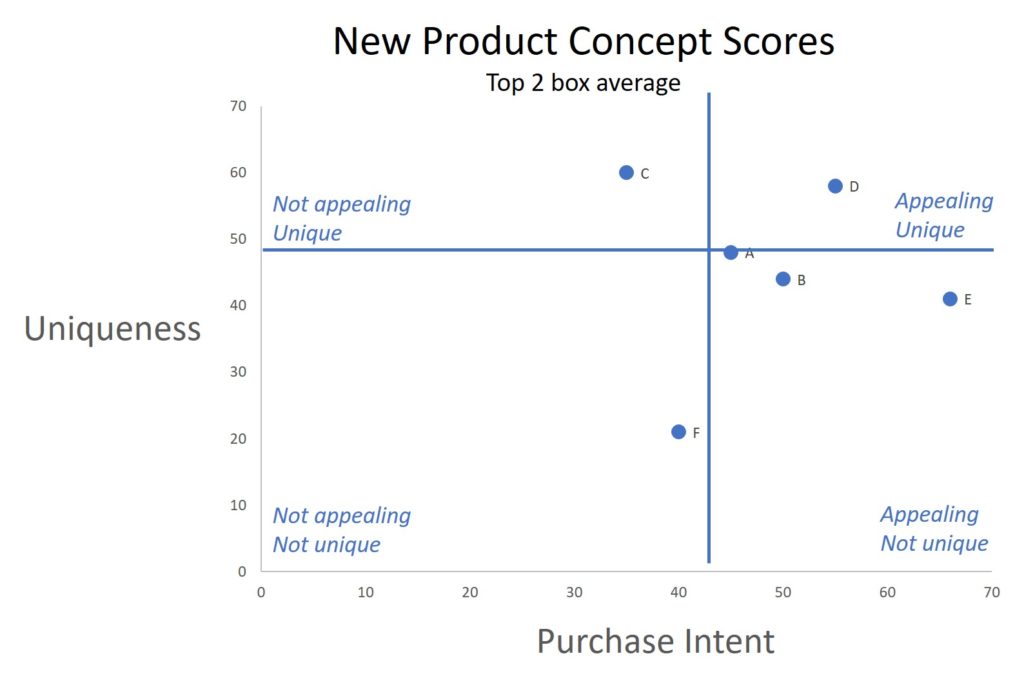When preparing a new product idea for launch into the market, it is critical to find out how well the idea resonates with the consumer. We do this by creating a product concept and testing it online. A product concept is a picture accompanied by a short statement describing the product and its benefits. We make the test with several questions, each with a numeric scale regarding interest. We then compare the resulting scores to other tested products to help determine the likelihood of success in the market
There are several reputable field study, organizations that test product concepts. Each has a proprietary database and offers predictions for success based on how your concept scores relative to other items they have tested. However, these tests are expensive and often impractical for a small budget.
However, there is a simple and inexpensive way to test product concepts on your own. Some trade-offs exist, but the data you get will be very usable and cost effective. For a smaller organization, this will be far better than not having any predictive consumer data at all. You can build your own database of test results that will be your benchmark. A homegrown database will be more suitable for benchmarking than a 3rd party’s database anyway, as you will know which products in your portfolio were a success. This is not always true in a 3rd party database. A 3rd party database also includes products across many categories which may make comparisons irrelevant.
Designing a Quick and Simple Research Test
Third party concept tests often ask several questions regarding product features, but in my experience there are only two questions predictive of a product’s success:
Purchase intent (PI): Based on this concept, how likely would you be to purchase this item, assuming a reasonable price?
5. Extremely Likely
4. Likely
3. Neither likely nor unlikely – not sure
2. Not likely
1. Extremely unlikely – no interest at all
Uniqueness: How unique would you say this product idea is?
4. No other products like this
3. Other products like this are available but this seems better
2. There are other products like this and this is like those
1. Other products available like this, but this seems not as good
Purchase intent and uniqueness predict consumer interest in different ways and are both important. Purchase intent is the strongest indicator.
Uniqueness shows how much a consumer thinks the idea is something new. People want to try something new to see if it is better or more exciting than what they buy now. While they may respond favorably to purchase intent, they won’t buy if they think it is the same as what is already in the market today.
Therefore, we discover the predictive result by using both measures in combination. I do this by plotting the two answers on a chart and choosing those that are high on BOTH measures. We used the percentage of respondents choosing the top two responses for each measure.

In this example, concept “E” scores best on purchase intent, while concept “D” is the winner in uniqueness and strong on purchase intent. Concept “D” is the best idea to launch into the market.

